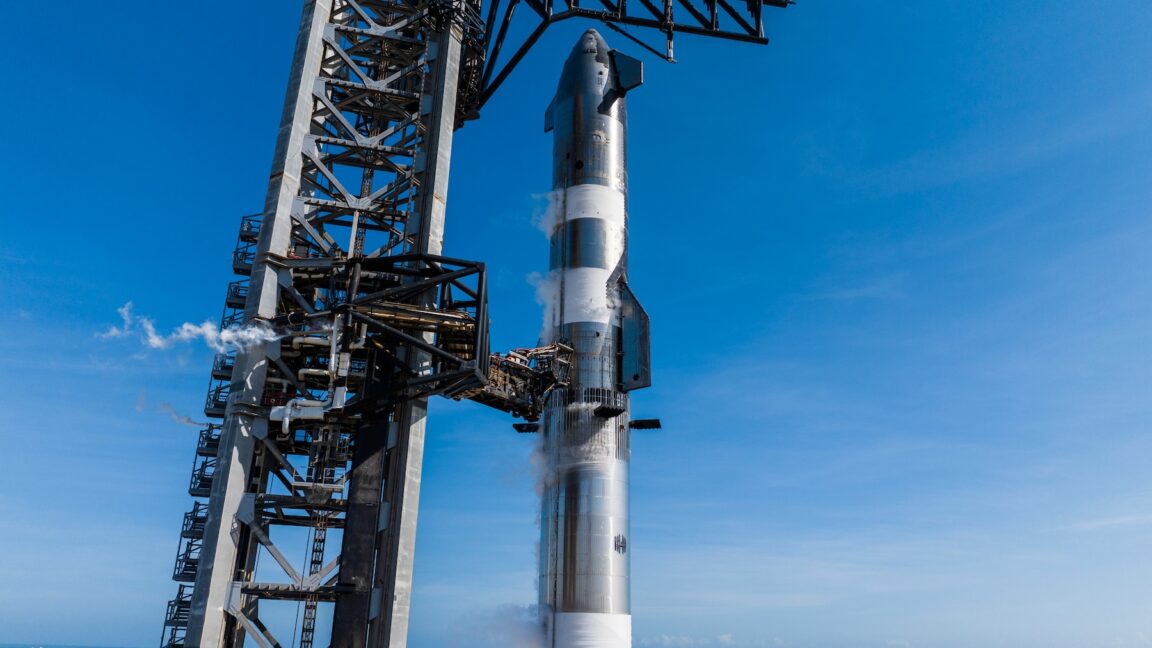
Remarkably, SpaceX succeeded in catching the Super Heavy booster on its first try last month, but there was room for improvement. For example, a piece of stainless steel metal from one of the booster’s chines, or small aerodynamic protuberances, stripped away from the rocket during its descent.
“Hardware upgrades for this flight add additional redundancy to booster propulsion systems, increase structural strength at key areas, and shorten the timeline to offload propellants from the booster following a successful catch,” SpaceX said. “Mission designers also updated software controls and commit criteria for the booster’s launch and return.”
In space, Starship will coast about a third of the way around the world before attempting the Raptor engine relight about 38 minutes into the flight. After this short burn, the ship will reorient itself to point its heat shield into the flow of super-heated plasma for reentry.
The flight should end about 65 minutes after launch, when the ship will maneuver from a belly-down orientation to a vertical position. Its Raptor engines will ignite one more time to put on the brakes for a controlled splashdown.
A turning point for Starship
This demo mission, if successful, will transition SpaceX’s mega-rocket from an early-stage experimental program into something more mature. This is the last flight of the first-generation version of Starship, known as V1, and it comes five weeks after the most recent test flight.
SpaceX seeks to fly Starships as many as 25 times next year, so cutting down the turnaround time between flights is fundamental to the company’s plans. Making Starship capable of sustained orbital operations—something the in-space engine relight should enable—is a prerequisite for launching Starlink satellites or refueling Starships in orbit.
Launching Starlinks on Starships is important for SpaceX to expand its global broadband network with larger, more powerful satellites too big to fit on the Falcon 9 rocket. And in-orbit refueling is required to support the ambitions of NASA and SpaceX to send Starships to the Moon and Mars, first with cargo and then with people.
Starship V2, which will debut on the seventh test flight, has larger propellant tanks, an upgraded heat shield, and redesigned forward flaps. It will be slightly taller than Starship V1.
President-elect Donald Trump, who SpaceX founder Elon Musk supported in this year’s election, plans to travel to South Texas to witness Tuesday’s launch, according to multiple media reports citing sources familiar with Trump’s schedule.
In his victory speech on election night, Trump veered into the topic of Starship for several minutes, recalling the experience of watching the first catch of the Super Heavy booster last month. “It was a beautiful thing to see,” Trump said.
Now, Musk is co-chairing Trump’s Department of Government Efficiency chartered to reduce wasteful government spending. Starship, among other SpaceX programs, will likely become big winners as the Trump administration develops its space policy.

